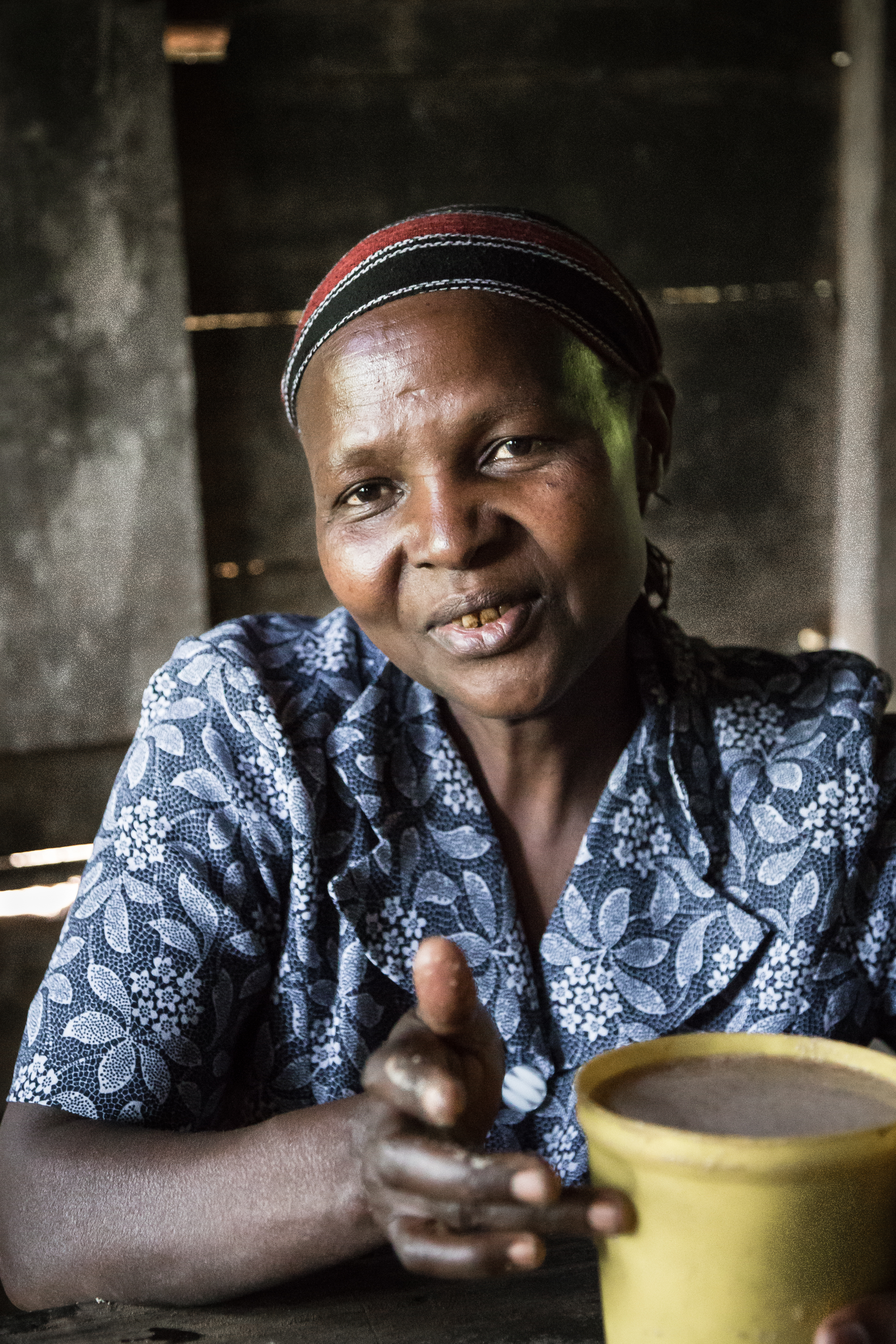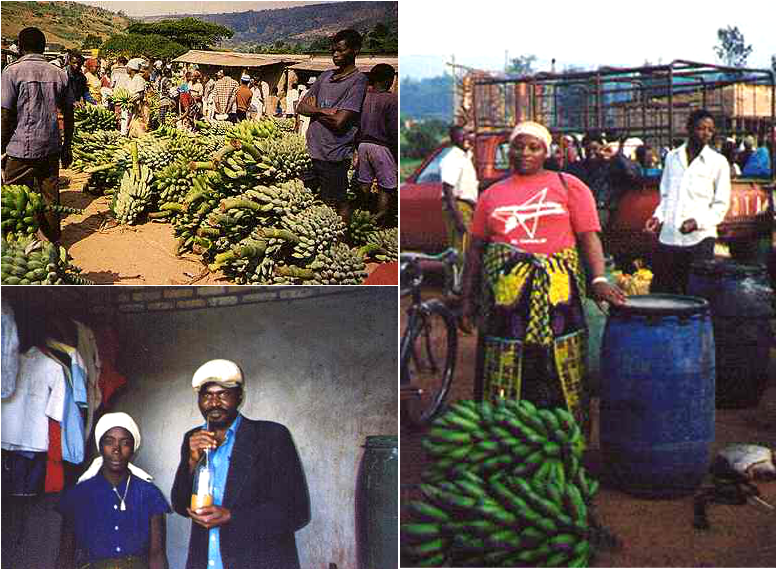|
Pathway no. 5 : OVER-RIPENING OF STARCHY FRUITS AND TUBERCULES |
|
Some traditional brewing techniques from tropical Africa and the Amazon cause the over-ripening of starchy fruits (plantain banana) and tubers (manioc, yam). The same is done in Asia with the tubers of taro or the starch from the pith of the sago palm (Borneo, Java). |
|
The ripener (pit, wooden trough, hollowed out trunk, large container) confines the raw material peeled, cooked in the case of tubers, and wrapped in leaves to increase its temperature. The process combines endogenous enzymatic sources (amylases) and external contributions from the microorganisms present on the plants and the walls of the ripener. As with malting, man provokes, accelerates and then diverts a natural biological process (ripening of the fruit, decomposition of the tubers) to his advantage. The enzymatic decomposition of the starch releases the sugars and causes their instant alcoholic fermentation. The addition of leaves (banana tree, palms, etc.) in the ripening apparatus ensures the presence of yeasts. The over-ripening proceeds by simultaneous hydrolysis and alcoholic fermentation. This technique is characterised by the judicious use of endogenous enzymatic decomposition mechanisms specific to fruit (ripening) and starchy tubers. It is not necessary to prepare some enzyme-bearing ferments or starter, unlike the starchy raw substrates low in amylases such as rice or millet processed by the brewing pathway no. 3. If we look at the process at its starting point (amylolysis), we are dealing with a true beer from plantain banana. The question arises about the fermented beverage made from the banana "fruit" : wine or banana beer? |
|
Starchy fruits host their own saccharifying enzymes (plantains, carob seeds, chestnuts, Pandanus julianettii seeds in Papua, etc.).The same applies to tubers such as taro, yams and cassava.
The activation of these enzymes requires hydrating the starch from these fruits or tubers, and enclosing them in a warm place to let the temperature rise. This causes them to over-ripen.
The endogenous enzymatic activity liquefies and saccharifies the starch, which ferments spontaneously in the presence of yeast. |
 Old man making local banana beer in Western Uganda Old man making local banana beer in Western Uganda Woman selling a traditional banana beer called Mbege in Tanzania Woman selling a traditional banana beer called Mbege in Tanzania Top: a large and growing banana market outside Kigali, Rwanda. Bottom: banana beer sellers at the Muhanga (former Gitarama) market, Rwanda. Right: banana beer in a big container and bananas sold by a woman at a separate banana beer market outside Kigali, Rwanda. Top: a large and growing banana market outside Kigali, Rwanda. Bottom: banana beer sellers at the Muhanga (former Gitarama) market, Rwanda. Right: banana beer in a big container and bananas sold by a woman at a separate banana beer market outside Kigali, Rwanda. |



-EN.png)